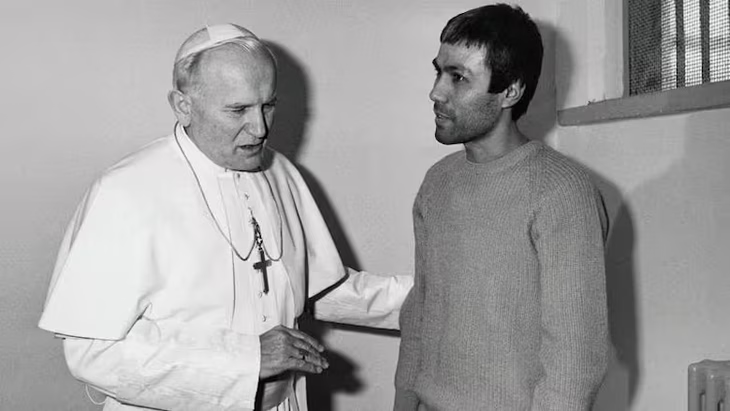In recent months, a great controversy was generated during the Euro 2024 when the Turkish national team player, Merih Demiralscored a goal and celebrated by making a particular gesture with the hand that emulated the head of a wolf. UEFA subsequently suspended the footballer for two matches because the celebration represents The Gray Wolvesa political movement of far right in Türkiye.
The group is attracting more and more More attention outside Turkish bordersjust like the typical gesture they make with their hand. The greeting and the organization begin to divide the waters and countries like Austria and France They have already taken strong positions on the same, prohibiting it and vetoing all the organization’s activities.
The Gray Wolves in Germany
The incident with the Turkish national team player caused a stir in Europe. Germany’s Interior Minister Nancy Faeser used her social media to criticise Demiral’s way of celebrating: “Symbols of Turkish right-wing extremists have no place in our stadiums”.
Faced with this, Türkiye reacted and accused the Berlin government of “xenophobia” for his criticism of the wolf gesture. Along these lines, the Turkish president, Recep Tayyip Erdogancame to the athlete’s defense: “Has anyone questioned why the German national team’s jersey has an eagle, or the French jersey a rooster? Merih (Demiral) He expressed his emotion with that gesture”.
Gray Wolves gest.avif
The beginnings of the gesture date back to the 1990s.
Getty Images
Neither the salute nor the organisation is currently outlawed in Germany. Burcu Ozcelik, senior researcher on Middle East Security at the Royal United Services Institute, explained: “When we talk about the Grey Wolves movement in Germany, what we are really referring to is a much broader ecosystem of clubs, cafes, local community associations”.
Currently, the German Federal Office for the Protection of the Constitution (BfV) classifies Gray Wolves as a right-wing extremist groupAccording to the monitoring carried out by the institution, it has between 18,500 and 20,000 members in that country.
Turks are the largest ethnic minority group in Germany, with a total of approximately three million Turkish citizens and Germans of Turkish descent. The total population of Germany is about 84 million. “Among the majority of the Turkish diaspora in Europe, nationalist tendencies and symbols are quite strong”comments journalist Kemal Can, an expert on Turkish nationalism.
The violence of the Gray Wolves
Since the 1970s, the Grey Wolves have been accused of several acts of violence both in Turkey and in Europe. One of the most resonant cases is the one involving the organization with the Assassination attempt on Pope John Paul II in 1981 by Mehmet Ali Agcaa member of the organization. On that occasion, the Supreme Pontiff of the Catholic Church was seriously wounded by gunshot in the attack.
John Paul II.avif

Mehmet Ali Agca and John Paul II reunited in prison after the assassination attempt.
Gray Wolves are frequently linked with the “deep turkish state”an alleged network of powerful and anti-democratic coalitions within Turkey’s political and bureaucratic structures. The organization has now been linked to street fighting in various European populations.
Despite the controversy they arouse – and their hypothetical links to violent actions – the Grey Wolves are not a banned group in GermanyHowever, the situation changes for other countries: in Austria was banned from making the gesture of the wolf in 2019, and France vetoed any Group activity in 2020.For its part, in 2021, the European Parliament recommended that the Grey Wolves were included in the EU terrorist list.
The group’s influence extends beyond European borders. In Azerbaijan, a country with close historical and linguistic ties to Turkey, The group attempted to capitalize on the strengthening of nationalism in that country following the collapse of the Soviet Union in 1991..
“The Gray Wolves caused Controversy in Azerbaijan after his alleged involvement in a 1995 coup attempt against Heydar Aliyevthe father of current President Ilham Aliyev,” said Könül Khalilova, editor of BBC News Azerbaijani.
Its influence also reached Kazakhstan, a country that, in 2005, also declared the organization illegal and classified it as a “terrorist group”. In view of this, Türkiye says there is no movement called the Grey Wolves and that banning the wolf salute is unacceptable.
The wolf as a symbol
The symbol of the wolf is causing a stir in the European community and its ban is beginning to take effect in some countries. Professor Ahmet Tasgil from the Department of Turkish Language and Literature at Yeditepe University in Istanbul explained: “The wolf symbol is one of the most important symbols for the Turks.”.
“All the Turkic tribes living in Central Asia used this symbol during the fourth and fifth centuries,” he recalled. In addition, the professor also highlighted various sources, from the 12th and 13th centuries, which allude to Armenian, Syriac and other Middle Eastern legends, which explain how the Turks, when they arrived in Anatolia, They did it by following a wolf: “For the Turks, The wolf is a guiding figure, representing wisdom.“, the professor said.
In the Ottoman period, in the late 19th century, the wolf symbol was used in various forms. In early modern Turkey, This animal began to appear on banknotes and stamps.
However, the history of the wolf salute dates back to the early 1990s in Azerbaijan. It was there that, amid mass protests, the hand gesture began to emerge.
“These protests contributed to the country’s independence and the collapse of the Soviet Union. This gesture, although not widely used,” Tasgil concluded.
Source: Ambito




